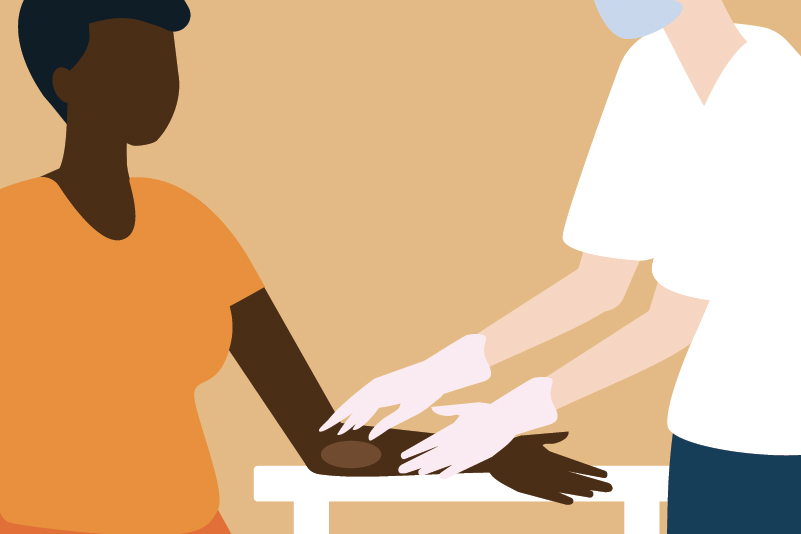#356: (A)dressing the Christmas Tree? Therapies for pityriasis rosea.

Reading Tools for Practice Article can earn you MainPro+ Credits
Join NowAlready a CFPCLearn Member? Log in
- One systematic review1 studying all treatments and 1 acyclovir2 (age 2-60). Outcomes at 2-weeks; statistically significant unless stated.
- Prednisolone (20mg tapered over 15-days) versus placebo [1 randomized, controlled trial (RCT), 70 patients]:1
- Resolved itch: 94% versus 32% (placebo).
- Good/excellent rash improvement: 97% versus 60% (placebo).
- Acyclovir 400-800mg 5x daily 7-days:1,2
- Versus placebo/vitamins/no treatment (3 RCTs 141 patients):1
- Good/excellent rash reduction: 67% versus 28% (control).1
- Versus no acyclovir with calamine lotion and cetirizine 10mg (both arms) (1 RCT, 24 patients):1
- Itch resolution: 75% versus 17% (no acyclovir).
- Lesion score3 (1-5, higher worse, baseline=4.1): 0.9 versus 3 (no acyclovir).
- Versus placebo/vitamins/no treatment (3 RCTs 141 patients):1
- Macrolides:
- Clarithromycin or azithromycin versus placebo (4 RCTs, 207 patients):1
- Rash/itch improvement: No difference.
- Erythromycin 1gram daily x7-14 days versus placebo:1
- Itch score reduction (1-10, more reduction=better) (1 RCT, 34 patients): 5.7 versus 1.8 (placebo).
- Rash improvement (2 RCTs, 86 patients): No difference.
- Gastrointestinal upset: 12% versus 6% (placebo).
- Clarithromycin or azithromycin versus placebo (4 RCTs, 207 patients):1
- Topical corticosteroids: No RCTs.1
- Antihistamines:1 Dexchlorpheniramine versus oral betamethasone versus combined (1 RCT, 85 patients).1
- Dexchlorpheniramine versus Betamethasone: No difference.
- Either versus combined: No difference in itch, but rash improved more in either alone versus combined (likely spurious).
- Limitations: Few/small studies, some unblinded.1
- Distribution of secondary lesions along Langer lines, appearing ≤6 weeks after herald patch. Self-limiting lasting ~45 days with moderate-severe pruritis in 30-50%.1
- Guidance:4
- Consider antihistamines or topical/oral corticosteroids if symptoms severe.
- Consider acyclovir in pregnancy but pityriasis rosea risks inconsistent/unclear. Example, case-series (38 pregnancies) suggesting first-trimester had higher pregnancy loss5 not supported in subsequent case-series (53 and 33 pregnancies).6,7 Treatment effect unknown.
- Proposed viral etiology (examples HHV-6, HHV-7), with constitutional symptoms ~69%.4
- Not to be confused with tinea (pityriasis) versicolor, caused by Malassezia yeast genus.8







practical case
Very well presented
I like how concise and to the point
practical-I may use valcyclovir
Great review.